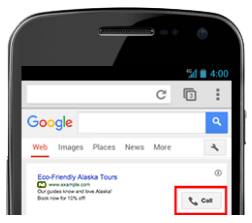B2B Myth of the Week: Simply Having a Website Is Enough
by Emily Swet
The Myth: Simply Having a Website Is Enough
The Truth: How Your Website Is Designed, Written, and Programmed Determines Its Performance
When was the last time you took a critical look at your B2B website design? In today’s market, B2B marketers simply can’t take a “one and done” approach to their web presence. Buyers have become acclimated to today’s standards. Content, searchability, user experience, aesthetics, and responsive design should be the drivers of your site layout. If your website hasn’t been updated in years, or if you haven’t fully fleshed out a recent redesign, we’ve put together a quick cheat sheet to get you up to speed.
5 Essential Building Blocks for B2B Websites
-
Killer Content
Creativity and persuasive insights don’t just work for B2C companies. There is a still a person on the other side of your website making purchase decisions every day. The content on your website has the potential to differentiate you from your competitors and lead your prospects further into your sales funnel. Make sure yours is compelling and directive. And more than anything, check your content for clarity, accuracy, and usefulness to your prospects.
-
Smart SEO & SEM
B2B marketers are getting savvier with search engine optimization and search engine marketing. And so should you. Since the rules are constantly changing, you can’t expect your site to produce results all by itself. Investing in an SEO/SEM specialist or using an agency to maximize your results based on cost efficiency is one of the smartest moves you can make. Use SEO and SEM to drive customers where you want them to go, then analyze their experience so you can make educated tweaks in the future.
-
Intuitive User Experience
Is your site easy to navigate? Where are your visuals placed? Are your call-to-action buttons easy to find? The answers to these questions can mean the difference between a click and a bounce. Your users want to be led, and your user experience dictates where you lead them. A successful user experience follows the natural eye flow pattern across a website. If your site feels clunky or fraught with stopping points, you’re more likely to lose users. Consider a redesign that leads your user to a purchase decision.
-
Engaging Aesthetics
The graphic design of your website has the power to elicit an emotional response as it is the first thing your buyer will see. Smart design works seamlessly with your content to convey a feeling, insight, or solution simply through imagery. You can set the tone right on the home page. The colors, fonts, photography, and illustrations you select can all affect those who visit the site. When done well, design can be a major point of differentiation from your competitors.
-
Responsive Design
Considering Mashable called 2013 The Year of Responsive Web Design, if your site isn’t by now, you’re woefully behind. Responsive sites “respond to” the type of device they are being viewed on, resizing to a more appropriate layout and view. (Think: desktop vs. laptop vs. tablet vs. smartphone). Why is this important? Because your buyers aren’t on their desktops all the time. If they are on the road or in meetings, and unable to really experience your site on their mobile device, you’re likely to lose them – and fast.
Online presence isn’t something that is created overnight. It takes time, research, and a budget to make a website worth having. Yet the initial effort up front can pay you back in spades for the long term. Your ROI can make it well worth it. So with this in mind, it’s worth repeating: when was the last time you took a critical look at B2B website design?
Continue ReadingA Call to Arms: AdWords Ad Extensions Can Be Your Greatest B2B Digital Marketing Ally
by MGB2B

HEY YOU!!!
Did I catch your attention? One of the overall goals of any B2B digital marketing campaign is to catch the audience’s eye and stand out from the competition. In a highly competitive arena like Google paid advertising, where our opportunities to attract quality attention are governed by strict rules like not being able to write something cheesy like “HEY YOU!!!” in an ad’s headline, and even stricter character limits, although this is getting a bit better lately with Google’s addition of new Expanded Text Ads, finding a way to separate yourself from the playing field can often be daunting. But fear not: Ad Extensions are here!
Any AdWords marketer worth their digital salt knows about ad extensions. They’re those complimentary bits of information that can show next to or below a text ad. There are a wealth of these extensions, and each allows the marketer the opportunity to give their audience a bit more info connected to their ad. But let’s focus on two that often go overlooked when setting up a B2B digital marketing campaign in AdWords.
AdWords Ad Extensions: Your Greatest Ally in the Fight for B2B Audiences’ Attention
Call Extensions: Call extensions allow you to show the phone number of your company alongside a text ad. This is a great way to improve your audience’s engagement with your ads. If a customer is using a desktop computer, your text ad will show your company’s phone number below the headline. If they’re searching on a smart phone, a “Call” button will show next to the add, allowing the customer to call you directly from the Google search results page with just one touch of their screen. This can be particularly handy in the B2B market, where an on-the-go salesman or contractor is searching for your company’s offerings.
Callout Extensons: Callout extensions run below a text ad providing added details about your company or offers, like the “Free Shipping” etc. in the ad below. These extensions offer you a fantastic way to highlight the key elements of your business in a structured line, and can be set up on an account, campaign or ad group level. And unlike their cousin Sitelink extensions, Callout extensions aren’t a clickable link and don’t require a unique attached URL. This allows you to single out special offers and calls to action, while still directing the audience to the landing page you’d originally chosen for your text ad. When trying to catch the attention of a busy B2B searcher, this can make or break an ad’s performance.
While both of these extensions offer their own specific audience engagement opportunities, they also provide an even more valuable service: they grab the searcher’s attention and make your ad stand out from the rest. On a search results page any available space is valuable, and both of these extensions allow you to take up more space than a stand-alone text ad would. And they add an air of authority and credibility to your ads, encouraging click confidence in your audience.
Historically, ads that show extensions like these can expect to see above average click-thru-rates and lead to conversions with lower cost-per-acquisitions, which are metrics any B2B digital marketer likes to see. Couple Call and Callout extensions with a well written, relevant text ad and you’ll be seeing better return-on-investment in no time.
The B2B paid advertising landscape on Google can often fell like a battlefield. Call on these ad extensions to help you win the fight! Need reinforcements? Drop us a line.
Continue Reading


